Lizzie Mandler Was Destined to Shine
The LA-based jeweler on her design ethos, her first standalone boutique,
and why natural diamonds are “miracles”
A wunderkind who took an interest in designing jewelry at 16 and had Rihanna wearing her designs by the time she was 23, Lizzie Mander, now 34, is continuing her ascent as a businesswoman and bespoke jeweler with a luxe new shop in the Sycamore District of L.A.
Aside from her glamorous, ever-evolving line of baubles, Mandler is also planning to expand into homeware—think jewelry boxes, candle holders, and vases—later this year.
OND: What is your design story? How did you start?
Lizzie Mandler: I’m the youngest of three kids. Everyone in my family is an artist. I always struggled to find an art form that was uniquely mine and also felt like I wasn’t competing with anyone in my family. When I was 16, I started to learn about becoming a metalsmith and never looked back.
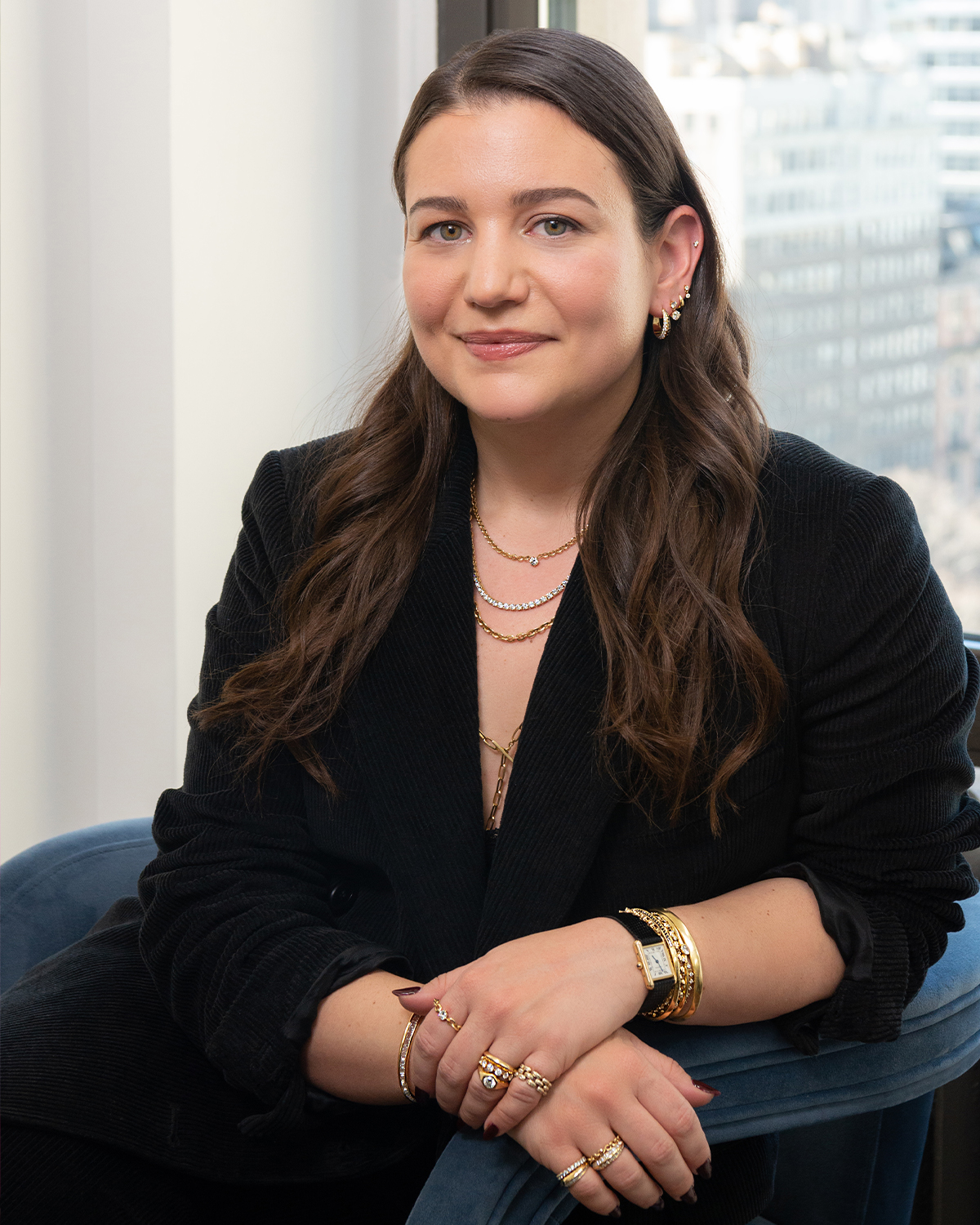
OND: You would go to the metalsmith classes after school?
LM: Yes, high school would end at 3 pm and I would go do four hours of metalsmith work at a separate school in Venice. Then I went to USC for college and I continued to attend the metalsmith school. Then I moved to Florence [Italy] for a year and I studied metalsmithing there as well.
OND: Some kids go to soccer practice and you learned…
LM: …how to be a goldsmith. [Laughs]
OND: When did you have that ‘aha’ moment when you knew jewelry making was something you wanted to pursue long-term?
LM: Honestly, I never had that. When I was 16, I was super determined but also super stubborn. I was determined to prove to my family that I could do it. My siblings are eight and 16 years older than me. So everyone was an adult and I was a child. I decided that this is what I wanted and I never looked back. It was never a question, which is a little crazy now that I think about it.
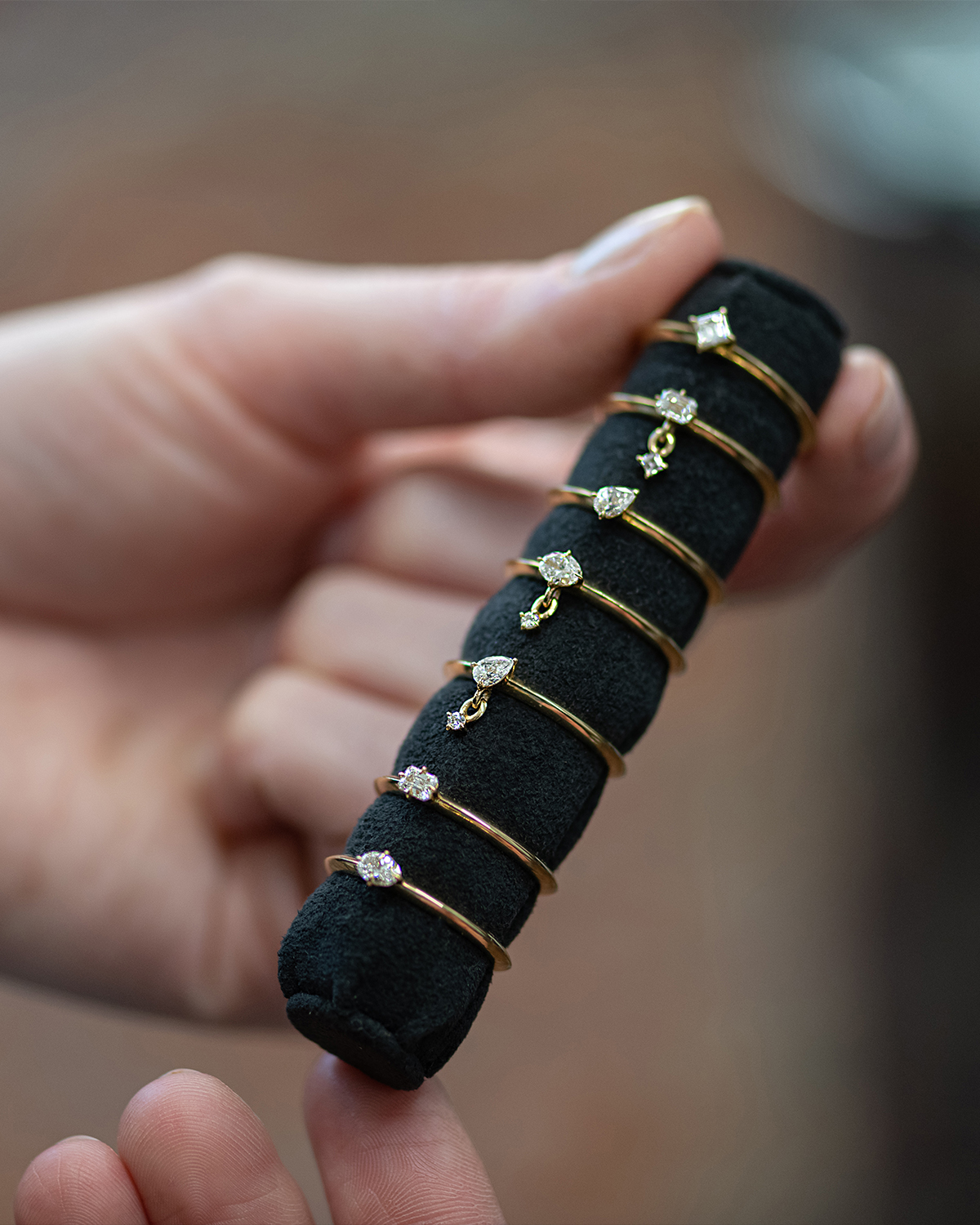
OND: Where do you look for inspiration for your designs? What brings out the designer in you?
LM: I go to Ojai a lot. That’s my happy place. The light is really magical there and it relaxes me. There’s a figure drawing class at nine in the morning at the community center on Thursdays. So I’ll drive up early, take the figure drawing class, and then spend the rest of the day in Ojai. That’s what allows me to be in the mental space to unplug and design.
I’ve never been inspired by one particular thing, but if I had to pick something, it’s the way jewelry moves on the body. I did figure drawing for a really long time so when I first started designing, I would draw things on myself. There was one ring I drew across my hands to figure out how it would lay. And whenever I design something I wear it for a long time to make sure it works. But it’s never been one source. I always think about the life the jewelry will have after it leaves my hands, where it goes, and how people will integrate it into their lives. How it becomes part of their story.

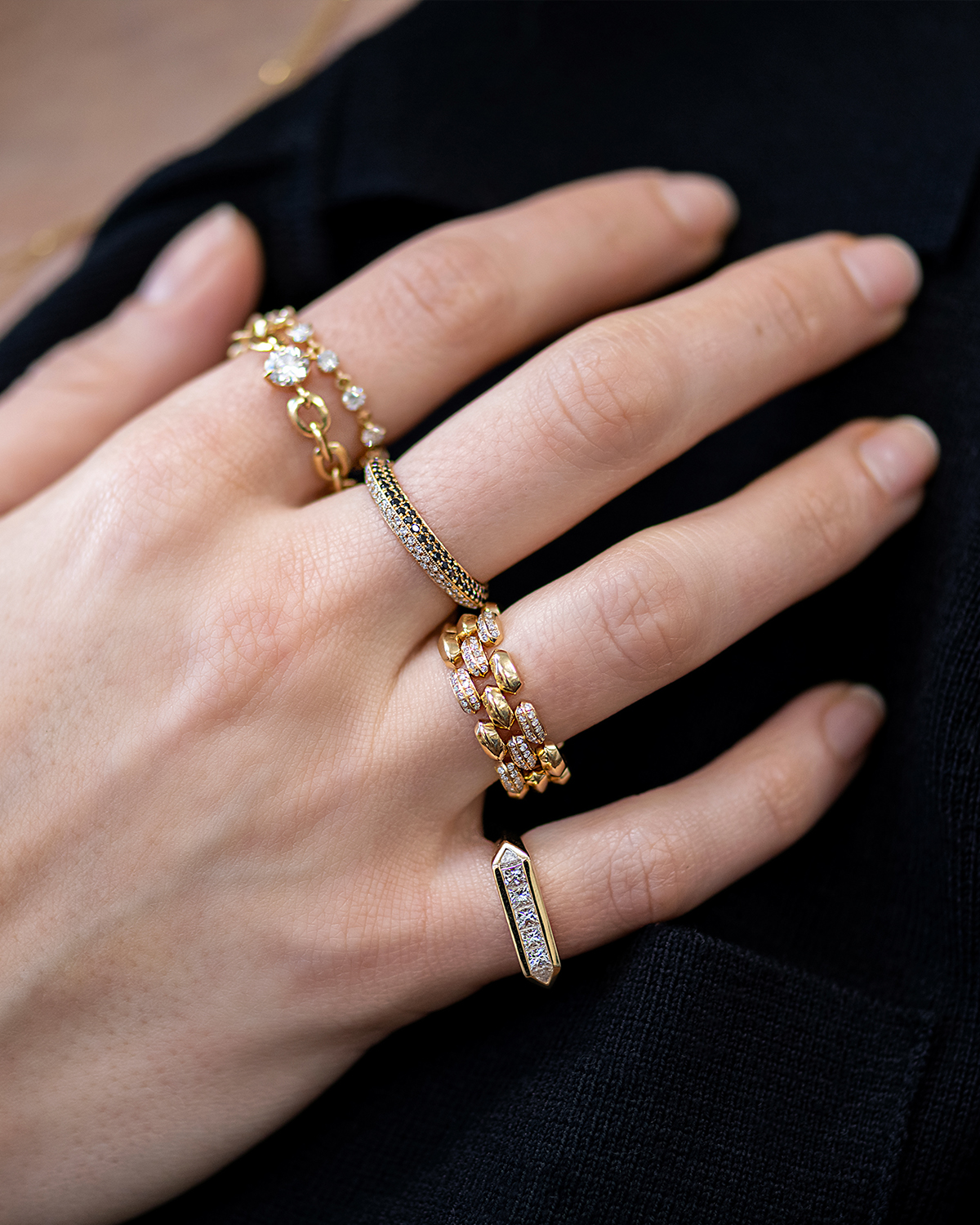
OND: Diamonds fall in line with that idea. The life of the diamond just goes on and on. What’s your first memory of a natural diamond?
LM: Growing up, my mom had an Elsa Peretti, Diamonds by the Yard, single bezel yellow-gold necklace that she wore every day. At some point, after my parents had been married a few years, my dad got her a slightly bigger one. When my sister had her bat mitzvah, she got the original. Then there was a legacy to live up to. I waited every single day of my 12-year-old life to turn 13 and have it passed down to me. After that happened, my dad ended up buying my mom a new one.
All three of us wore [a version of] this necklace every day. That necklace had an incredible amount of significance to me. It was the moment when I realized that jewelry had a unique ability to be simultaneously time-specific and timeless. That is special and powerful. It was a turning point in my life where I realized how special jewelry can be for someone.
OND: When was the first time that you started incorporating diamonds into the jewelry that you were making?
LM: I think maybe three weeks into my metalsmith classes. The first technique you learn is wax carving. The first thing I ever made was a feather pendant. Then I made a knife edge ring. When the teacher asked me what technique I specifically wanted to learn, I asked him how to flush-set one-millimeter diamonds. He thought I was crazy. It’s really challenging, but that was my design aesthetic from the very beginning.
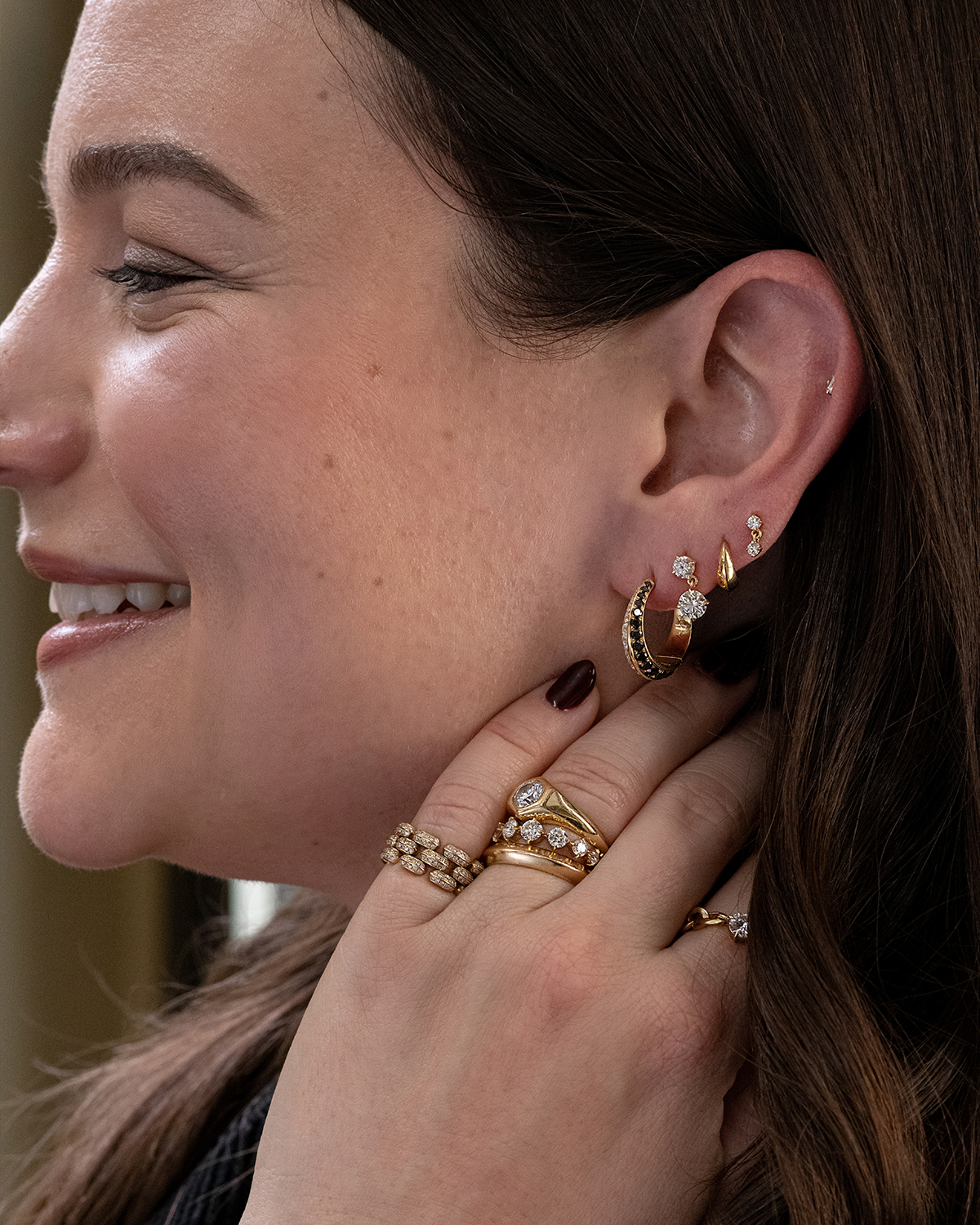
OND: So you always knew that diamonds were going to be essential to your designs?
LM: Absolutely.
OND: And why natural diamonds?
LM: A natural diamond is like a miracle. It’s cheesy to say, but it’s really incredible when you think about how these diamonds are formed, and that they come from the earth. Fluorescence in a diamond gets a bad rap but is really beautiful because there’s a special quality. It’s something created from the ground.
OND: Speaking of pieces that are timeless and of the moment, how do you strike that balance in your collections?
LM: It’s hard to create things that are contemporary and speak to the moment without being too right now. That’s why my knife edge pieces have always been symbolic [to me], plus it was the second design I ever made. As a silhouette, it’s unique and tricks the eye a little bit. It has this dynamic quality, but a very simple shape that allows me to play with diamonds on one side, diamonds on two sides, and different colored diamonds.

OND: What does it mean to you when you see your designs on celebrities?
LM: To be honest, seeing them in photo shoots is great, but there’s no bigger compliment to me than when someone owns a piece and wears it all the time. It’s part of their story, it’s what they wear. To me, that’s like the real moment. I want my jewelry to be worn in everyday life and not just for a special occasion or a photo shoot.
OND: What’s the process when you are working directly with clients?
LM: A lot of my clients come to me for resets. What’s amazing about jewelry is that your diamond or stone can hold your memories and be significant for you and you can still change its setting to make it something that you enjoy today. It doesn’t have to be your grandmother’s setting. It’s O.K. to take an original diamond and bring it up to date to make it part of your wardrobe.
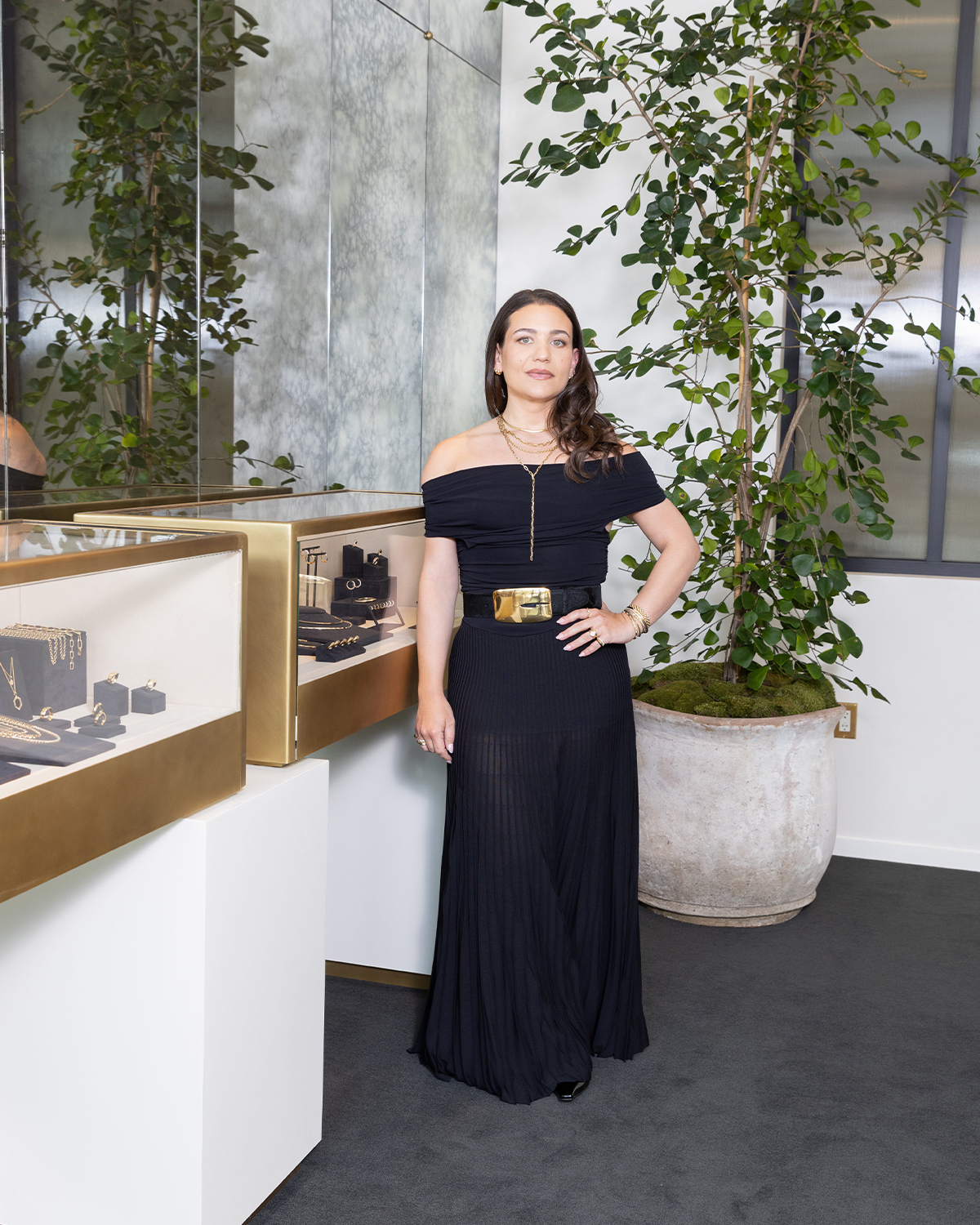
Photography by Susanne Kindt
OND: Tell us about your new store in Hollywood.
LM: It’s our first brick-and-mortar store. It’s also our office and our studio. I wanted to create the physical world where my jewelry belongs. I love my retail partners, and I love my website, but when my jewelry is sold through my retail partners, it is sold in their world. It’s my story told through their lens. So I wanted to give my clients the opportunity to see a physical space that embodies the work that I do and also give my bridal clients a chance to come into a space that felt welcoming for the experience of designing a ring.
OND: Sounds perfect. Let’s talk about wedding jewelry. How did you select what you wore on your wedding day [in 2021] and why did you select the pieces that you did?
LM: I had a hard time. The entire wedding styling process was challenging for me as a designer. I tried on 52 dresses. We were at the Couture shows three weeks before I was leaving for my wedding and I still hadn’t designed my jewelry because I was so consumed with finishing the couture collection.
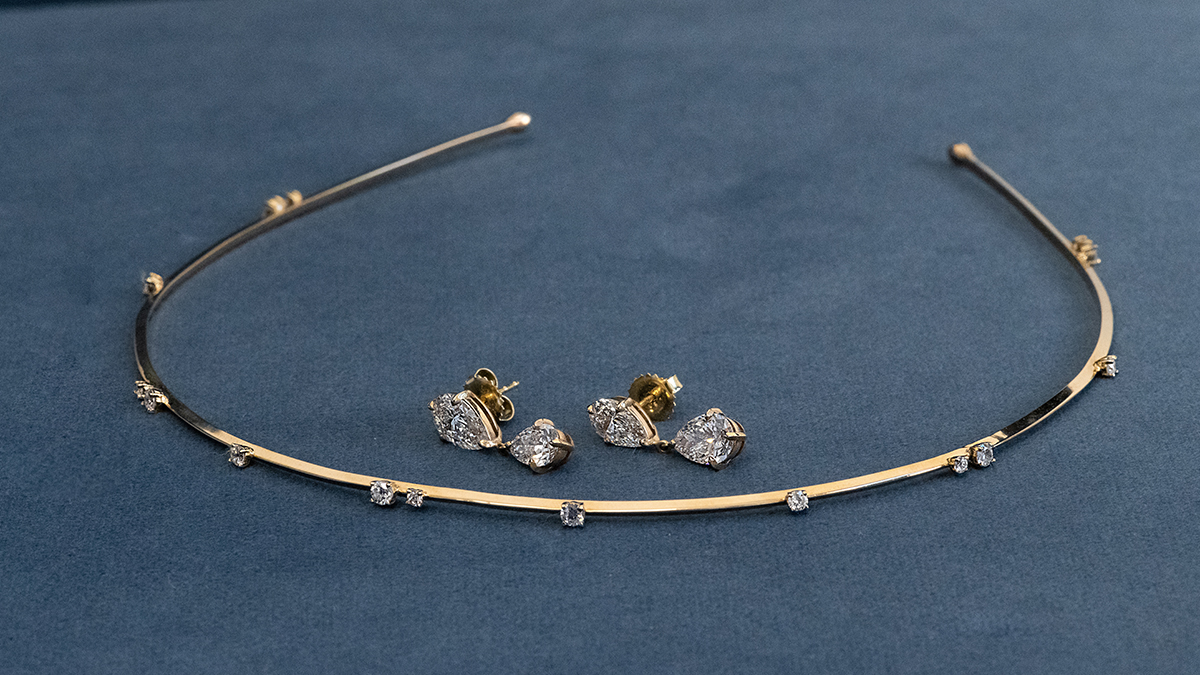
Photography by Andrew Werner
So I grabbed my friend Lito, the jewelry designer. She was like, “You’re insane. You have to do this right now.” She and I sat there and took my jewelry and pieced it together. We designed it that day and I sent the designs that night and that was it. I really needed her help. I needed someone to force me to do it because at that point I was so overloaded with decision-making that I couldn’t focus on my jewelry. You would think it would be the easiest thing for me to focus on. But, I still don’t have an engagement ring. It’s not easy for me to design for myself.
OND: What would your dream engagement ring be?
LM: I don’t know. I keep saying that I’m waiting for the right stones. I’m trying to find something that speaks to me. It’s hard because I work with this all day, every day. I just have to design something because clearly, it’s not very easy for me to make these types of decisions. I’m my own worst nightmare, for sure.
OND: When it’s for yourself, it’s harder than when you’re making it for someone else.
LM: It’s absolutely true. You are always your own worst client. [Laughs]
